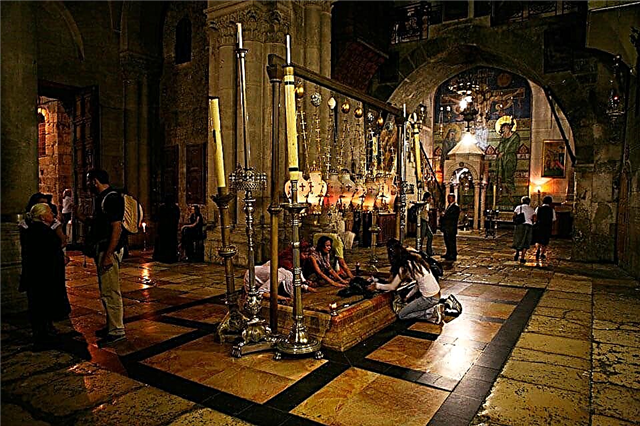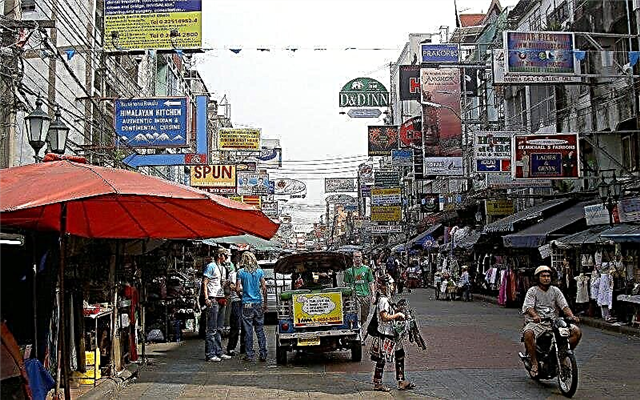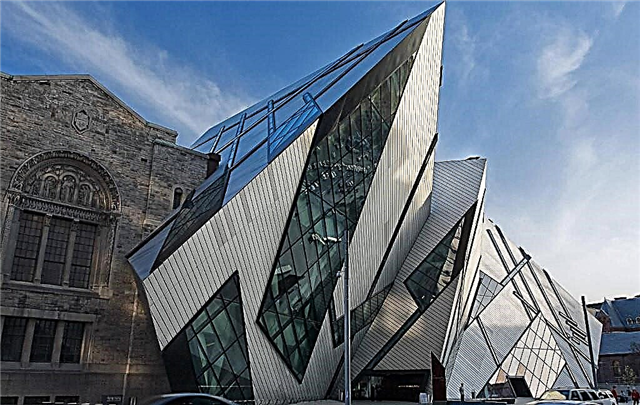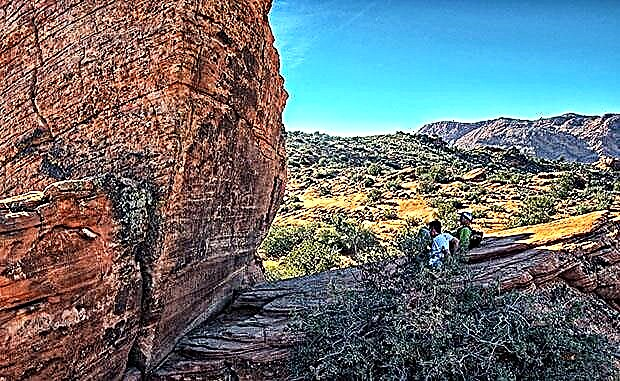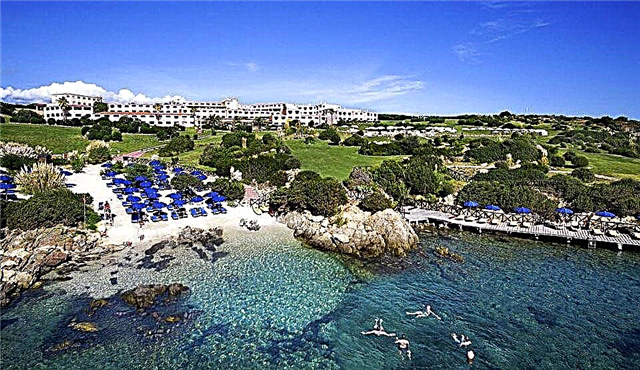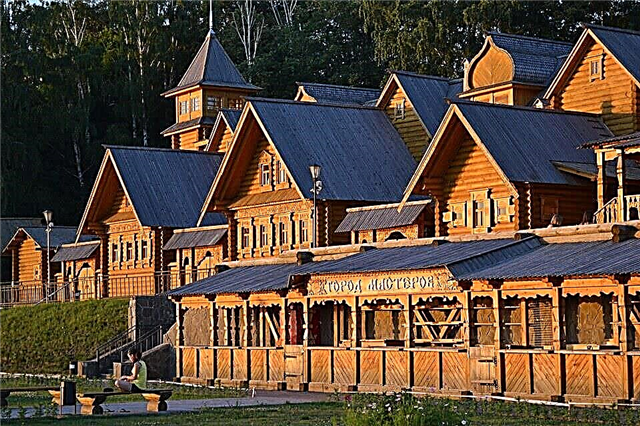Nizhny Novgorod is experiencing a rebirth today. The famous Fair, where international forums are held, has been restored. But the city has retained both the features of the powerful center of trade of the Russian Empire and the charm of the Russian province. Interest in him is constantly growing. But not all tourists want to buy multi-day excursions. Some people prefer to explore Nizhny on their own. And the question: what to see in Nizhny Novgorod in 2 days on their own is relevant for them. If you correctly build a route and allocate time, you can really cover the main interesting places.
First day
On the first day, you should take a walk through the historic center of Nizhny Novgorod. Objects are located here compactly: you can walk from one to another. There are no problems with having a snack and rest: numerous cafes and restaurants offer a varied menu for every budget. The main route will end at Rozhdestvenka: then you should cross the Volga and see the reconstructed Fair and the Alexander Nevsky Cathedral. And after the walk, having received an abundance of new impressions, it is recommended to rent a room in a local hotel. If you move a little from the center, you can save a lot.
Verkhne-Volzhskaya embankment

The embankment owes its education to Nicholas 1. He visited Nizhny Novgorod and noticed that a wonderful panorama opens up from a high slope. But the impression was spoiled by the terrible stench, the pitiful huts of the poor and the disgusting ravines. By order of the emperor, the coast was reconstructed. The ravines were filled up and leveled, the dilapidated houses were demolished. There is a boulevard along the coast.
Exceptionally rich buildings were allowed to be built in this place. For convenience, the city authorities have equipped 2 congresses. The embankment soon fell in love with the townspeople: they walked here, made a rendezvous, even arranged business meetings. This continued until 1917. After the October coup, the appearance of the territory changed: the houses were built on, the Geogievsky temple was demolished, and the embankment was renamed in honor of A.A. Zhdanov.
Today the Verkhne-Volzhskaya embankment is the most visited place in the city. Tourists come here, admire the sunsets. Historical buildings are concentrated along the river bank. After walking just 3 km, you can get a general idea of the city. The Verkhne-Volzhskaya embankment connects the Minin and Pozharsky squares with the Sennaya.
Alexander Garden

The garden is part of the landscaping program proposed by Nikolai 1. The main idea: to create a park with viewpoints, gazebos and benches. But at the same time, the impression of a completely natural territory should remain. The design of the landscape was carried out by railway engineers and Nikolai 1's personal gardener. The main work took 2 years, but tree planting continued for several more years. For regular watering of the plants, a spring water collection system was set up.
The garden was named after Empress Alexandra Feodorovna. The townspeople quickly fell in love with the shady corner, where it was pleasant to spend time after walking along the embankment. In Soviet times, the territory was changed: the Chkalovskaya staircase was built, tennis courts and sports grounds were organized. In 1941, Stalin's bunker was built here. But later the work was curtailed, local historians cannot find their traces.
Today, the garden is an excellently equipped place to relax after sightseeing in the city, and it is pleasant to admire the surroundings from observation platforms. Festive events are held in the park. It is never boring here. The Alexander Garden organically connects the Upper Volga and Nizhne-Volzhskaya embankments.
Minin and Pozharsky Square

All major events of the city take place on this territory. This is not only the historical center, but also the heart of Nizhny Novgorod. Minin and Pozharsky Square is surrounded by interesting buildings, and amazing monuments are located on it:
- the first city fountain
- 3 universities (Minin, Medical and Lobachevsky)
- sculptures by Kuzma Minin and Valery Chkalov
It is noteworthy that the square is not pedestrian: traffic is allowed on it. The traffic flow stops only on the days of official events. Minin and Pozharsky Square is located at the intersection of Varvarskaya, Bolshaya Pokrovskaya, Ulyanov and Verkhne-Volzhskaya embankment streets.
Nizhny Novgorod Kremlin

The Kremlin is both an old fortress and a grain of the historical center of the city. An amazing panorama of the Volga and Oka opens from here. The townspeople and guests of Nizhny Novgorod loved to spend their time here at all times. But at the same time, the Kremlin is a place of concentration of state structures.
It is on its territory that the building of the government of Nizhny Novgorod is located, court hearings are being held. The entrance to the territory of the Kremlin is free, but you have to pay to visit museums and exhibitions. You can save money by purchasing a single ticket. It gives the right to visit the Kremlin Wall and Dmitrievskaya Tower.
Guests willingly inspect:
- towers (Dmitrievskaya, Zachatyevskaya, Sentry, Ivanovskaya, White, Nikolskaya, Pantry, Powder, Koromyslov)
- Kremlin wall
- Cathedral of Michael the Archangel
- The House of Soviets is a modern building erected on the site of the destroyed Transfiguration Cathedral
Nizhny Novgorod State Museum, located in the Governor's House. The territory is well-groomed: paths are tiled, flower beds are laid out, trees are planted. There are comfortable benches for relaxation. And for those who want to buy something as a keepsake, there are souvenir booths. The Kremlin is located near Minin Square and Pozharsky Square.
The Rukavishnikovs' estate

After the conversion of the embankment, by order of Nicholas 1, it was allowed to build only expensive houses according to interesting projects along the high bank of the Volga. This is exactly what the house of Rukavishnikov, a merchant of the 1st guild, became. Rukavishnikov was engaged not only in trade, but also made generous donations. Contemporaries rightfully called him a patron of the arts.
The customer was generous: expensive oak was used for the construction, and precious woods were used for interior decoration. The internal staircase was made of white stone. All this splendor was designed by an architect from Moscow Boytsov. All rooms are made in different colors: blue, lilac, pink. All this splendor is illuminated by crystal lamps and chandeliers.
Today the estate is a branch of the Nizhny Novgorod Art Museum. Here you can not only see the interiors of the late 18th century, but also visit thematic exhibitions. The city estate of the merchant Rukavishnikov is included in the list of cultural heritage of Russia.
The complex is located along the Verkhne-Volzhskaya embankment, 7.
Chkalovskaya stairs

The staircase was built from 1943 to 1949. The project was designed by Munts, Yakovlev, Rudnev. And as workers, captured German soldiers and officers were attracted. The object is unique: it is the second longest staircase in the Russian Federation. There are 680 steps in total (if you count both sides of the structure). At the top, the staircase is adjacent to the monument to Valery Chkalov, and below - with the boat Hero.
The monument to the hero-pilot gave the name to the object. An amazing panorama of the arrow opens from all landings of the stairs. The Russian river is especially beautiful at sunset hours. It is not surprising that high school graduates and newlyweds come to the stairs. Chkalovskaya staircase is included in the list of cultural heritage of Russia of regional significance.
The complex is located in the Alexander Garden.
Bolshaya Pokrovskaya street

Bolshaya Pokrovskaya Street was once called Bolshaya Ilyinskaya and had a different direction. Then she went exactly to Moscow. But after Catherine II, the street stretched to the Dmitrievskaya tower.Only nobles settled here, and the first buildings were wooden. In the 18th century, walking along Pokrovskaya Street, one could see the estates of the Governor-General, princely families, and high-ranking officials.
At the end of the 19th century, a theater was built on the street, and at the beginning of the 20th century, a bank was built. The building has become dense, and the layout has finally taken shape. After the October coup, Bolshaya Pokrovskaya Street received a new name - Sverdlov Street, but in the 90s it was returned to its former name.
Today Pokrovka is pedestrian. Sculptures are placed here, street musicians give concerts. Unfortunately the buildings are not well maintained. Café owners often neglect fire safety measures, and city officials are attempting to demolish historic homes. But for now, tourists can see the noble street of the amazing city.
Bolshaya Pokrovskaya street begins at Minin and Pozharsky squares and passes through Lyadov, Gorky, Teatralnaya squares.
Malaya Pokrovskaya street

Today this street is only 700 m long, and in the 19th century the city border ran along it. In the 30s of the 19th century, the road to Arzamas passed along it. And at the same time, the early wooden buildings began to be replaced by stone ones. But the houses on it were a little simpler than on Bolshaya Pokrovka. In the Soviet period, the street was called Yakov Vorobyov Street. Some old-timers still call Malaya Pokrovka Vorobyovka.
On Malaya Pokrovka stand out:
- Houses built by the merchant Ikonnikov for his sons. Compared to the mansions of Bolshaya Pokrovskaya, the estates are rather modest. But in one of them, after the October coup, Pogrebinsky lived, who convinced the Petrel of the Revolution, the writer Gorky, to return to the USSR.
- Sarovbusinessbank, built at the end of the 20th century. Due to its unusual architecture, it is called a chest with a lock.
- House number 5, where the building of the KGB (FSB) is located.
- The estate of Khudyakov, a shipbuilder from Balakhna. The family moved to Nizhny after the death of their young son.
- House of the nobleman Dobrovolsky. The building is closely sandwiched by new buildings, but stands out for its graceful architecture.
- Malaya Pokrovskaya Street is located between the Povalikhinsky Congress and the Museum of Communications (Zvezdinka).
Ilyinskaya street

It is a mountainous street and you should wear comfortable shoes to walk along it. But it is walking on foot that allows you to see all the unusualness of Ilyinka. Once the street ended at the Ilyinsky lattice: here was the border of the city. And since the street was part of the road to Moscow, there were always a lot of drivers here. But respectable merchants settled on Ilyinka, initially there was not a single artisan's house.
On the other hand, an orphanage and the Institute for Noble Maidens were built on the street. Initially, the buildings were wooden, but after the fire in 1839, the construction of stone houses began. It is not surprising: Nicholas 1 ordered to issue significant loans to the victims of the fire. Unfortunately, after the October coup, the city authorities did not seek to keep Ilyinka's houses in order.
The housing stock was dilapidated, and at the beginning of the 21st century, historical buildings began to be demolished and modern high-rise buildings were erected in their place. Still, it is worth taking a walk along this amazing street to see the remains of the former merchant splendor.
Ilyinskaya Street begins at the Nizhny Novgorod Kremlin.
Fedorovsky embankment

Some townspeople consider the Embankment to be the best observation deck of Nizhny Novgorod. A panorama opens from here:
- the park
- River Station
- Arrow
- Alexander Nevsky Cathedral
- Nizhne-Volzhskaya embankment
- Kanavinsky bridge
The views of the city are especially beautiful at sunset. The most interesting monuments are located on the embankment itself (or not far from it):
- Temple of the Prophet Elijah, 16th century
- bridges over the Oka enemies (on which lovers and newlyweds swear allegiance to each other)
- radius house with 7 entrances
- school named after Lomonosov
- sculpture by Maxim Gorky (there is an exact copy of it in Magdeburg)
- monument to Jules Verne
Modern shops are built on the hill, where you can buy food and drinks for a walk.
Fedorovsky embankment stretches parallel to Rozhdestvenskaya street. You can go down to it along the streets of Ilyinskaya, Zalomov and Suetinskaya.
Spit of the Oka and Volga

The arrow is an amazing place. Here the Oka and Volga merge. In early spring, townspeople and guests come to watch how the murky waters of the Oka mix with the transparent yellowish Volga waters. The place got its name due to the fact that in the 16th century, the camp of the archers was located in a convenient lowland. Loading and unloading of arriving ships took place in the port. After the Makaryevskaya fair moved to Nizhny, the port on Strelka was reconstructed.
Warehouses for storing goods were built here, the number of berths for cargo ships was increased. For the autonomous supply of drinking water, the Fair Waterworks was built. During the Soviet era, the port continued to develop: it became the largest river port. But after the transfer of the cargo flow to Bor and Kstovo in 2015, the port turned out to be abandoned, and the coastal area began to spontaneously build up.
During the work, they accidentally discovered deep bunkers. They were supposed to hide from a nuclear strike. Presumably, they were built during the Cold War era. Today the territory has been cleared, but it will not be possible to approach the water on the Strelka. But you can see it perfectly from Fedorovskaya embankment. Oka flows out from under the Kanavinsky bridge, and the Volga is much wider.
Christmas church

It is impossible to explore Nizhny Novgorod bypassing the Nativity Church. This is a unique example of Russian baroque. At first glance, the temple resembles St. Basil's Cathedral in Moscow: the carved domes are painted in bright colors. It would be more correct to call the temple the Cathedral of the Mother of God. It is called Rozhdestvensky because earlier there was a Christmas church on the street, after which the street was named. And after the demolition of the Nativity Church, the Cathedral of the Mother of God Church began to be called the Nativity Church.
The temple was built at the expense of the merchant Stroganov. After consecration at the beginning of the 18th century, the building burned down, and it was already restored by the entrepreneur's wife, Maria Yakovlevna. The fate of the cathedral was not easy: the first time it was ordered to be closed by Peter the Great, and the second - by the local council. The rector of the cathedral, Sergiy (Veisov), defended Rozhdestvenka from complete destruction. He proved the historical value of the building. Today the temple is functioning, with a Sunday school. Rozhdestvenka can be viewed inside and out, the main thing is to respect the feelings of believers.
The temple is located along Rozhdestvenskaya Street, 13a.
Some guests prefer to explore the city on their own, but to get a complete picture, it is recommended to book a tour, the route of which covers all the places listed above:
The main thing in Nizhny: embankments, squares, streets - a living story about the city and the people who influenced it, while walking through iconic places. A keen guide will show photographs, diagrams, drawings, reproductions of paintings. These documents will help to better understand the past and present of the city.
Nizhny Novgorod fair

Until 1913, the Nizhny Novgorod Fair was a significant event not only in the city, but throughout the empire. Merchants and industrialists from all over the world came here. For their reception and placement of the imported goods, the infrastructure was improved, new pavilions were built. The authorities especially encouraged the construction of stone buildings: after the completion of the work, they became the property of the investor.
During World War I, trade literally came to naught: refugees and wounded soldiers were deployed on the territory, theft and looting flourished. And after the October coup, the territory of the fair was annexed to the city, and trade was replaced by natural exchange. Today the Nizhny Novgorod Fair is a modern complex that guests of the city willingly visit.
Here you can see:
- The Armorial Hall, where events of the highest level are held
- Passage
- cafes, restaurants
- exhibition pavilions
- conference rooms
- the customs post
- bank
- hotel
Thematic exhibitions are held in the Main Fair House. Boris Yeltsin and Vladimir Putin attended the modern Fair at different times. The fair is located on Sovnarkomovskaya street, 13.
Alexander Nevsky Cathedral

The New Fair Cathedral is the tallest in the city. In Russia, it is in third place, behind the Cathedral of Christ the Savior and St. Isaac's Cathedral. The place was indicated by Emperor Alexander 2, and the merchants allocated money for the construction. But it took a long time to build the temple - almost 14 years. And it was designed by Kelewijn and Dahl, the son of the compiler of the explanatory dictionary of the Russian language. The cathedral was already illuminated in the presence of Alexander III.
After the October coup, the New Fair Cathedral was closed and plundered. The priceless iconostasis was chopped up for firewood. But the parishioners saved the life-giving cross and the miraculous icon of the Mother of God. During the Great Patriotic War, anti-aircraft guns were installed on the roof. At the same time, a fire destroyed the frescoes on the walls.
At the end of the twentieth century, the cathedral was restored, in the 90s it was handed over to the Russian Orthodox Church. Today it is a functioning temple with many relics. The cathedral's special pride is the Cathedral bell, installed at the entrance in honor of the victory of the people's militia of Minin and Pozharsky. This is the 3rd bell in size: its weight is about 60 tons. It is smaller than only the Tsar Bell and the bells of the Trinity-Sergius Lavra.
The temple is located on Strelka street, 3a.
Second day
On the first day I managed to see the historical center and the famous Fair. Memorable places are located compactly: you can go from one to another on foot. But in the vicinity of Nizhny Novgorod there are also many interesting things, so the second day should be devoted to studying them. Unfortunately, you will hardly be able to see everything in a day, but you will be able to choose the most impressive one.
Chkalovsk, Balakhna, Gorodets

In just 8 hours, it is proposed to explore 3 different towns:
In Chkalovsk, a visit to the house-museum of Valery Chkalov is expected. Here are the personal belongings of the famous pilot. In addition, guests will be invited to inspect the hangar, where a collection of aircraft is exhibited. Among the exhibits is an airplane on which Chkalov's crew flew over the North Pole. The city is located in a picturesque place: on the shores of the Gorky Sea.
Balakhna is the birthplace of the patriot Kuzma Minin. A wealthy merchant was the first to donate money to arm the people's militia. Today Balakhna is a quiet town. But here you can see the church, which was built in honor of the capture of Kazan in 1552. The amazing buildings of the 19th century have been preserved in Balakhna. At the end, the guests will walk along the picturesque embankment.
Gorodets is the most venerable city in the Nizhny Novgorod region. Here tourists will get acquainted with the crafts of the province, see the exposition of old samovars. Visitors will be offered herbal tea with gingerbread made according to old recipes. A walk along the city earthen rampart will remain in memory for a long time. And the believing guests will bow to the icon of the Feodorovskaya Mother of God in the Feodorovskiy Monastery.
The groups are small, and during the trip, a keen guide will tell you about the history of the region and answer questions.
Kerzhensky reserve

The unique Kerzhensky Reserve offers an extensive excursion program:
Exploring the floodplain of the Kerzhenets River will take 2 hours. During this time, tourists will hear an interesting story about river and coastal inhabitants. The guide will tell you about how the nature of the reserve is being restored. The trail is equipped with comfortable platforms with handrails.
It is proposed to explore the world of the Vishensky bog in 2 hours. The swamp is an amazing natural site that provides shelter for numerous plants and animals.
The walk through the Protected Forest will last 3 hours. During this time, guests will learn about the diversity of the flora of Kerzhenets and Cherry, see the Witch's broom, a huge growth on a birch and an oak in 3 girths.
A quick excursion to the Kerzhenets floodplain will take 1 hour. During this time, tourists will receive all information about the reserve in a compressed form.
A visit to the eco-center Kerzhensky will take 1 hour.
Guests are offered comprehensive programs that take 3-4 hours. The price includes a visit to the tea room, where there are dishes and furniture. Guests should bring their own food and tea leaves. The interactive lesson Extinguishing a forest fire is also interesting. It will take 3 hours. All routes are closed in a ring. And you can drive up to the meeting place as part of a group or by your own car.
Sheremetyev Castle and Svetloyar Lake

The trip will take 13 hours. On the way from Nizhniy, tourists will learn about Kitezhskaya Rus. In the village of Vladimirskoye, the bus will make a stop, and the guests will go to the legendary lake Svetloyar. Here you can check if the legends are true and take a dip. In the village of Yurino, a local guide will show you Sheremetyev's estate. The house consists of hundreds of rooms, an extensive park and a utility yard.
After the inspection, you will have free time: you can take a walk in the amazing park on your own. At the very end, guests will visit the Archangel Michael Church. It was built in the twentieth century on the site of a church that stood here before the invasion of the Horde. Time on the road will fly by quickly: an experienced guide will tell you about the history of the Nizhny Novgorod province.
Bolshoe Boldino

There are 3 options for the excursion:
The trip will take 13 hours. The program includes a tour of the family estate of A.S. Pushkin. Through the efforts of the administration of the center, not only the manor house, but also the outbuildings, including the patrimonial office, have been perfectly preserved. In the house-museum you can see the interiors in which the poet lived. The Cathedral of the Assumption will leave an indelible impression. It was built by the grandfather of Alexander Sergeevich, and the church was restored to celebrate the 200th anniversary of Pushkin. The trip will end in the village of Lvovka. Here tourists will visit the museum of Belkin's Tales characters.
This tour will take 13 hours. The trip to Bolshoe Boldino will be dedicated not only to the great poet. First, tourists will visit the exposition in Arzamas dedicated to A.P. Gaidar, they will see the house of Podsosova, where A.M. lived in exile. Bitter. The guests will lay flowers on the grave of Tanya Savicheva in Shatki. In the village of Tolsky Maidan, tourists will visit an exposition dedicated to Dobrolyubov. And the trip will end in Boldino, the homeland of the great poet.
The trip will take 10 hours. The guide will tell you about the poet's pedigree, interesting cases from the life of his descendants. The guests will visit the family estate, the village of Lvovka with an exposition of literary heroes from Belkin's Tales, the Luchinnik grove. Outdoor picnics can be enjoyed in fine weather.
Peshelan caves and Arzamas

Arzamas is an amazing city that has retained its originality, despite the difficulties of the era. Guests will get acquainted with an amazing exhibition dedicated to mining, geology and speleology. To study the exhibits, you will have to put on special clothes and go underground. but then tourists will see an underground lake, a waterfall and stalactites with stalagmites. And the center of Arzamas will delight you with amazing buildings. After examining the central square, believers will attach themselves to the miraculous icon of Deliverance from Troubles.
The trip will take 9 hours.
Chkalovsk

At the mention of the name Chkalovsk, everyone remembers the great Soviet pilot. But this city is famous for other attractions as well. The local lore guide will tell you about the Church of the Nativity of the Virgin in the village of Katunki. It was built during the reign of Catherine the Great. Inside, there are unique frescoes created by painters from Italy.
Then tourists will visit the house-museum of Valery Chkalov and see the collection of airplanes. And in the museum of speed, visitors will learn about the designer Alekseev, who designed ekranoplanes. The trip will take 9 hours.


